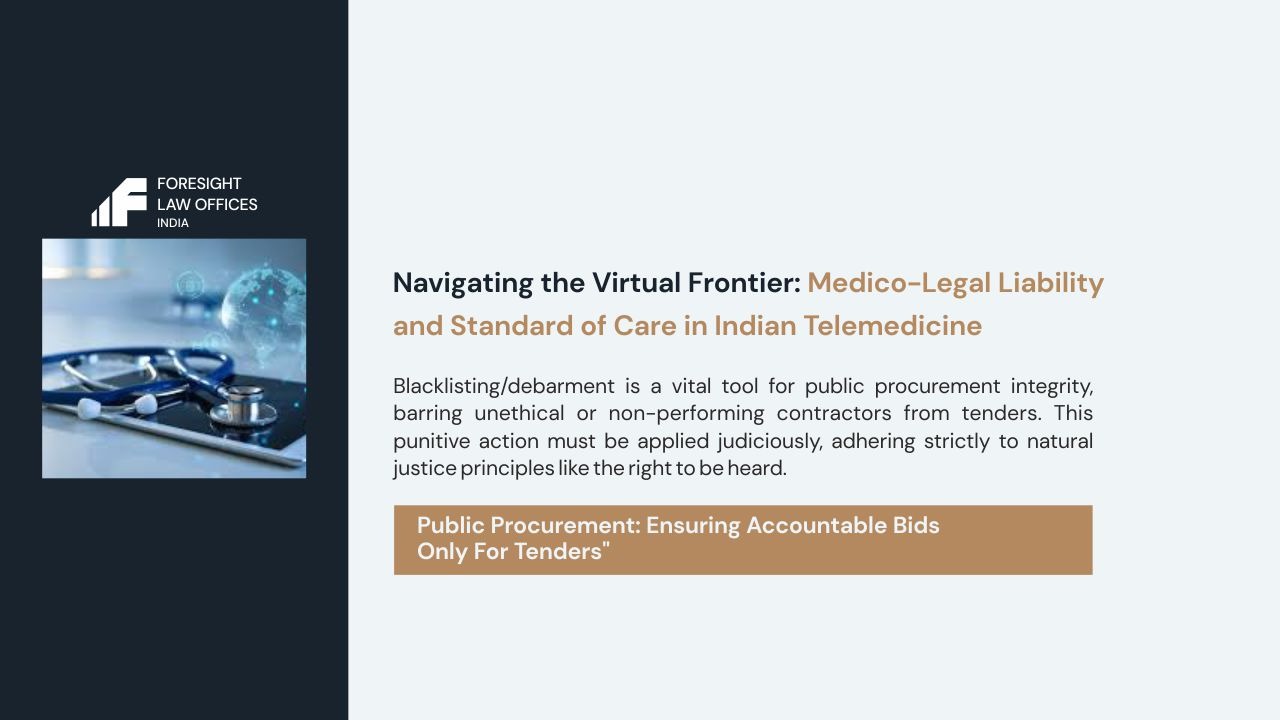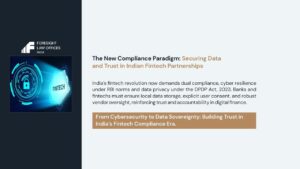The digital transformation of healthcare in India has accelerated into its regulatory phase. With the Telemedicine Practice Guidelines (TPG) 2020 now fully integrated and the Digital Personal Data Protection (DPDP) Act, 2023, setting stringent accountability norms, the focus has shifted entirely to practical application and enforcement.
As of late 2025, the medico-legal sphere is defined by judicial scrutiny of telemedicine negligence claims, particularly concerning the core principle: “The RMP will be held accountable for any negligence, to the same extent as in an in-person consultation.”
Here are the core areas of liability and the evolving ‘standard of care’ in Indian telemedicine.
-
The Judicial Scrutiny of “Prudent Deferral”: The Core of Negligence
The most frequent challenge in telemedicine liability cases involves the Registered Medical Practitioner (RMP)’s decision to not advise an in-person consultation. Courts and Consumer Commissions are increasingly applying for the “Prudent RMP” test.
|
Scenario |
Legal Trend (2024-2025) |
| Inadequate Assessment | The courts are scrutinizing the documented “Reasoning for Teleconsultation” record. If a patient’s symptoms (e.g., severe abdominal pain, chest discomfort, acute neurological signs) clearly warrant a physical exam, the RMP’s liability increases exponentially if they fail to comply with the required procedure. |
| The “Visual Clue” Standard | In cases involving dermatological or external injuries, RMPs are being held liable if low video quality or poor image submission (by the patient) resulted in misdiagnosis, and the RMP failed to document efforts to procure better visual data or, critically, failed to insist on a switch to an in-person visit. |
| Contributory Negligence | Recent rulings from the State Consumer Disputes Redressal Commissions (SCDRCs), following a trend set in traditional medical negligence, defined under medical law, have begun exploring patient contributory negligence in telemedicine. For instance, if a patient explicitly acts in contravention of follow-up advice (e.g., fails to report worsening symptoms or to undergo suggested tests), this may reduce the RMP’s quantum of liability, but it rarely absolves the RMP entirely. |
-
The Liability Quagmire: RMP vs. Platform
As e-health platforms have become ubiquitous, the question of vicarious liability has gained momentum under the Consumer Protection Act, 2019 (CPA).
RMPs Under CPA: A significant ruling in late 2024 re-affirmed that doctors and medical services remain under the purview of the CPA. This reinforces the patient’s right to seek compensation for “deficiency in service” in a forum that is generally quicker than civil courts, directly impacting how RMPs manage risk in telemedicine.
Platform Accountability: Following landmark non-telemedicine rulings against e-commerce intermediaries, the legal spotlight has moved to telemedicine platforms. The argument is: if a platform is an ‘active facilitator’ (e.g., by matching patients to doctors for a fee, or listing unverified doctors) rather than a mere conduit, it cannot claim intermediary immunity.
Regulatory Actions (Q2-Q4 2025): The National Medical Commission (NMC) in compliance with the medical law has clarified that platforms must strictly adhere to the TPG, especially regarding the mandatory display and verification of RMP credentials. Failure to do so has led to advisories and warnings, setting the stage for future joint liability claims in negligence cases where an unverified or inappropriately credentialed RMP is found negligent.
-
Emerging Liability Hotspots: AI and Remote Monitoring
The integration of advanced technology is pushing the legal envelope on who is accountable for a bad outcome.
AI Diagnostics and Algorithmic Bias: With pilot projects, such as the government-endorsed “Aarogya-Doctor on Wheels” leveraging AI for patient screening, the potential for AI-induced error rises. Legally, the TPG remains clear: AI is a supporting tool, not a substitute for the RMP’s final judgment.
The Hypothetical “AI Malpractice” Scenario: If an AI diagnostic tool, licensed by a platform, fails to flag a critical symptom, and the RMP relies on the tool without exercising due care (i.e., failing to cross-check with the patient’s actual history), the RMP is held primarily liable. The platform’s liability is likely to be explored under product liability laws for a faulty “digital medical device,” representing a major area of future litigation.
Remote Patient Monitoring (RPM): The legal challenge in RPM is the duty to respond. If an RMP receives real-time data from a patient’s wearable device indicating a critical health metric (e.g., dangerously high blood pressure) but the response protocol is slow or inadequate, it can constitute negligence. Clear, documented, and protocol-driven response mechanisms are the legal safeguard against such claims.
-
The Data Protection Mandate: Liability for Digital Harm
While not clinical negligence, a failure in data protection is a primary legal risk for all telemedicine entities post-DPDP Act (2023).
Data Fiduciary Accountability: All telemedicine platforms and large RMP clinics are Data Fiduciaries. Any negligence in securing sensitive personal health data, leading to a breach, can result in significant financial penalties imposed by the Data Protection Board of India, entirely separate from any medical negligence claim.
Consent and Transparency: The legal duty to provide transparent information and obtain clear, valid consent for processing health data is now a non-negotiable compliance pillar. Ambiguous privacy policies or forced consent mechanisms are legally unsound.
Excellence in the Virtual Clinic
The message from the Indian legal system in 2025 is unambiguous: Telemedicine is not a diluted form of medical practice; it is a full-fledged service subject to the same high legal and ethical standards.
For RMPs, vigilance means more than clinical skill, it means mastering the TPG, meticulously documenting the reasoning for the type of consultation chosen, and understanding the limitations of the technology used. For the industry, it is a clear call to develop compliant and robust digital systems where the platform’s liability is fully integrated into the risk model.
The coming years will see more judicial pronouncements that solidify the standards of care, transforming what were once guidelines into binding legal precedents for the new age of Indian digital healthcare.






